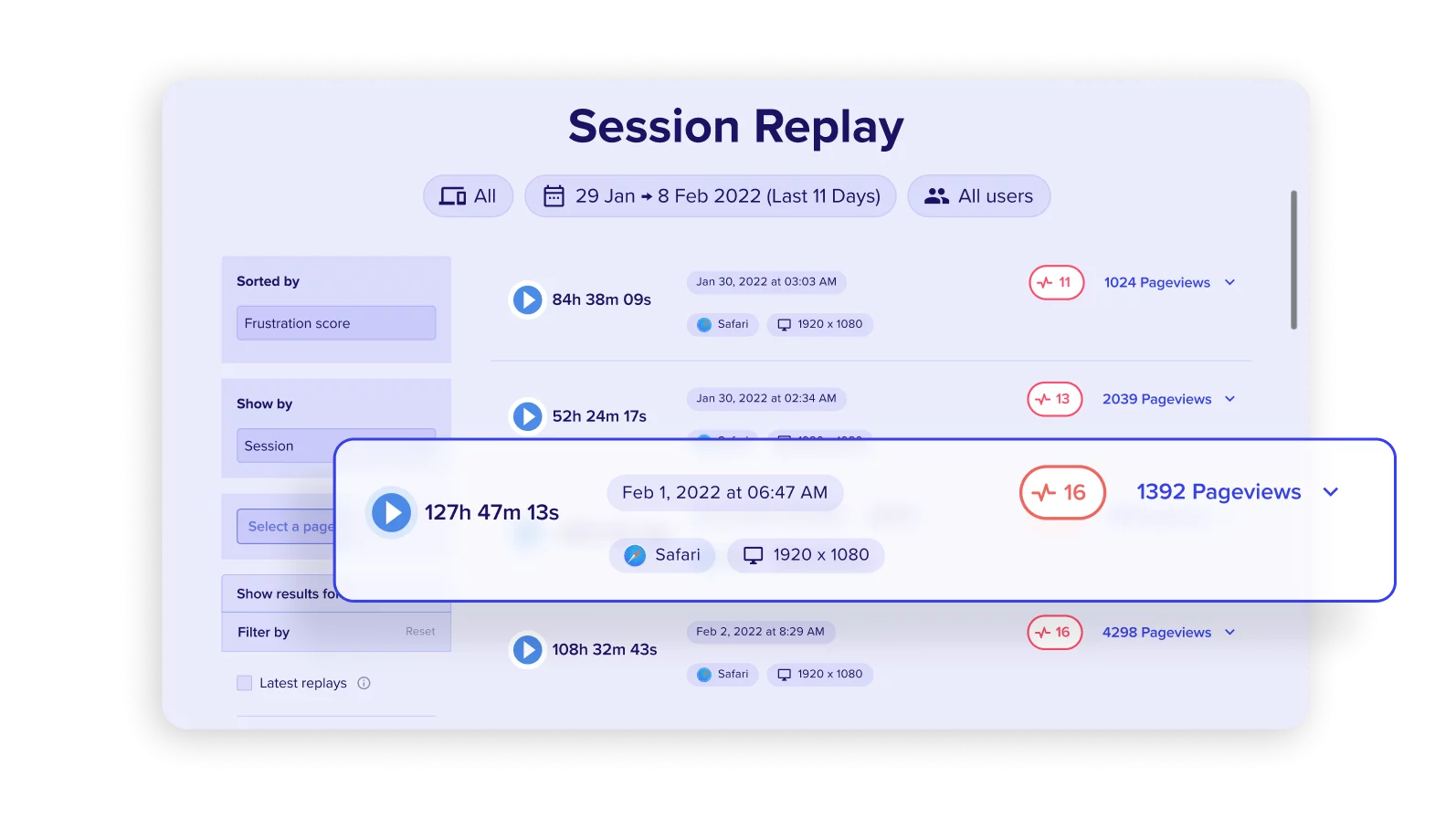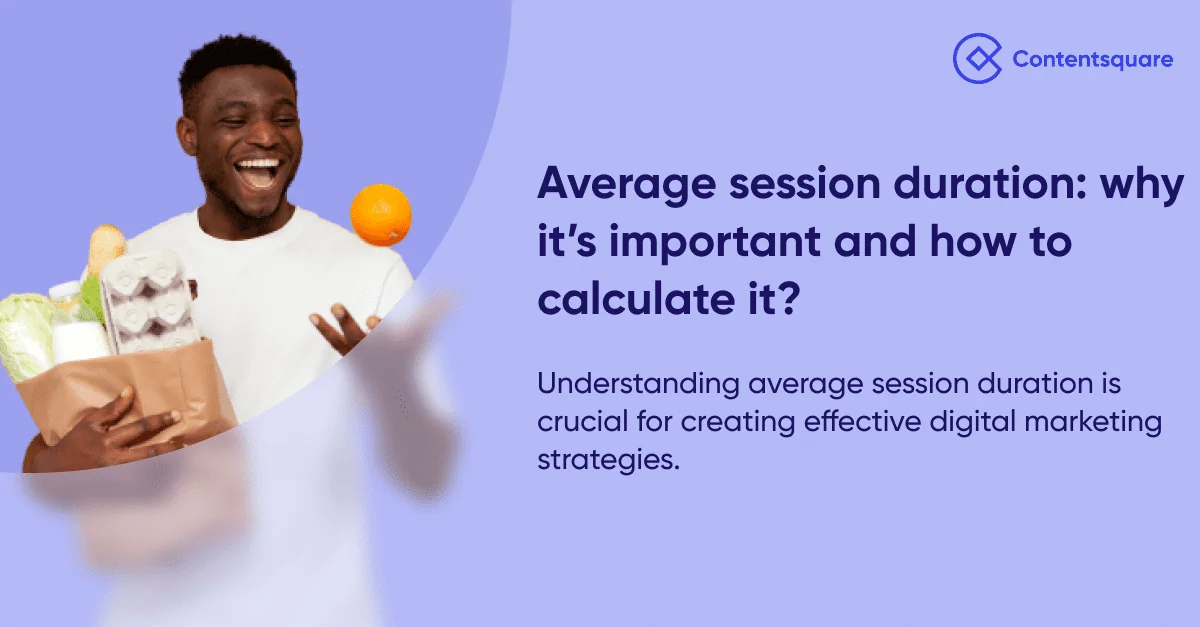
Reconstruct individual visitor sessions to reveal hidden behaviors.

Average session duration is a fundamental metric that provides insight into user engagement on your website. Understanding average session duration is crucial for creating effective digital marketing strategies and understanding visitor behavior, a key component in assessing website performance.
A session is the active engagement period a user spends on your site. This engagement clock starts ticking when a user accesses your site and continues until there’s inactivity exceeding 30 minutes or at midnight.
This metric is calculated by dividing the total duration of all sessions by the number of sessions. The resulting figure serves as an industry benchmark for user engagement levels, indicating how long, on average, users are interacting with your website within a single session.
It’s essential to consider industry benchmarks while evaluating your average session length, because this metric varies significantly across different industries, websites, and user demographics. Therefore, comparing your website’s average session length with similar websites in your industry provides more accurate insights. Furthermore, tracking changes in this metric over time helps you identify trends and evaluate the impact of any changes you make to your website.
Average session duration vs. time on page: average session duration should not be confused with ‘time on page’. Both provide insights into user engagement but measure different aspects. Time on page calculates the average amount of time users spend on a specific web page, whereas average session duration pertains to your entire website, encompassing all pages viewed within a single session.

Reconstruct individual visitor sessions to reveal hidden behaviors.
User replay: a critical tool for user session analysis in 2024

See how your digital experience stacks up.
Get the 2024 Digital Experience Benchmark Report and Interactive Explorer for the metrics that really matter.
Google Analytics 4 (GA4), a powerful tool in website analytics, provides detailed insights into site traffic and user behavior. To find the average session duration of your website on GA4, navigate to the “Audience Overview” report. This report provides a wealth of information about your website’s visitors, including average session duration.
You can segment the average session length by various dimensions such as user demographics, traffic source and device in the “Audience Overview” report. This segmentation provides valuable insights into visitor behavior, helping you tailor your content and design to improve user engagement and website performance.
However, it’s essential to note that Google Analytics excludes bounced sessions when calculating average session duration. Therefore, if your website has a high bounce rate, your average session duration might be skewed. To get a more accurate picture, consider using the “Adjusted Bounce Rate” feature or analyze this metric in conjunction with other engagement metrics, such as pages per session and conversion rate.

See how your digital experience stacks up.
Get the 2024 Digital Experience Benchmark Report and Interactive Explorer for the metrics that really matter.